Art World
A New Book Uses 400-Year-Old Court Transcripts to Recreate Baroque Painter Artemisia Gentileschi’s Rape Trial
Author Joy McCullough adapted the court papers into a new novel.
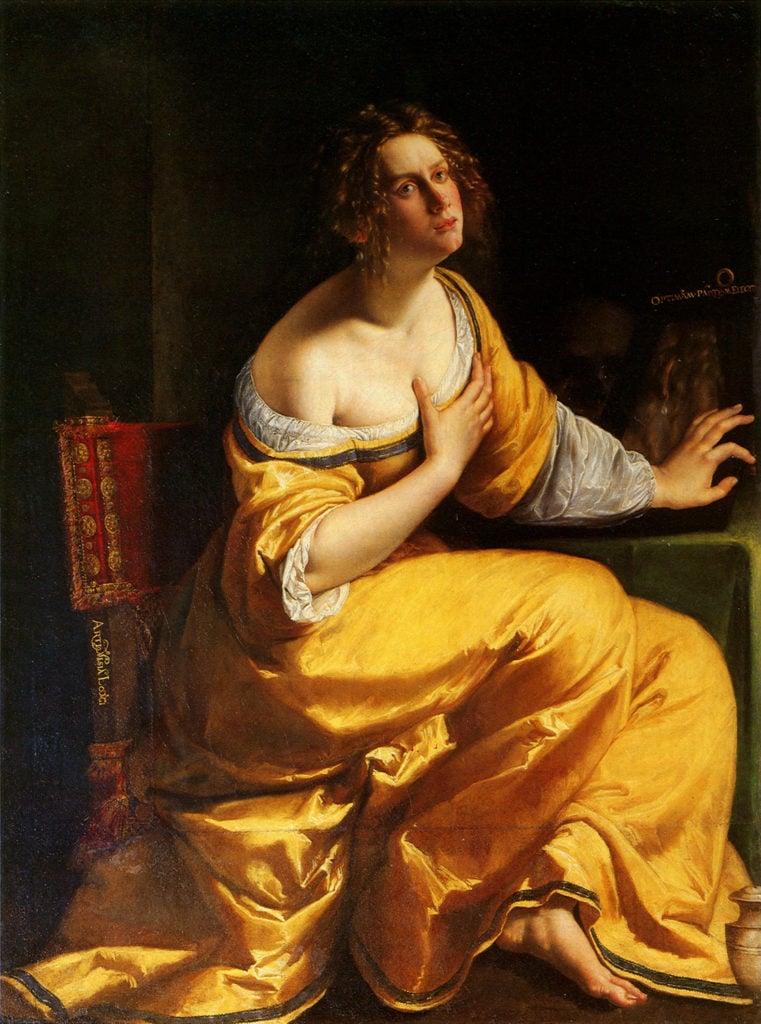
Author Joy McCullough adapted the court papers into a new novel.

Sarah Cascone

In Blood Water Paint, author Joy McCullough tells a tragic yet empowering tale about Artemisia Gentileschi, the 17th-century Italian Baroque painter. Gentileschi has gone down in history not only as an acclaimed Old Master painter, but also a feminist hero who successfully pressed charges against her teacher, artist Agostino Tassi, who was convicted of raping Gentileschi in 1612.
Because a woman couldn’t bring rape charges at the time, her father, the noted painter Orazio Gentileschi, filed the lawsuit. It was considered a crime of property damage; Artemisia had lost “bartering value.”
During Tassi’s seven-month trial, midwives physically examined Gentileschi in front of a judge, who then demanded that her hands be tortured in order to see if she changed her story under pressure. The saga is meticulously documented in some 300 pages of court records, which McCullough mined first for a play and then for the novel, an emotionally resonant tale written entirely in free verse.
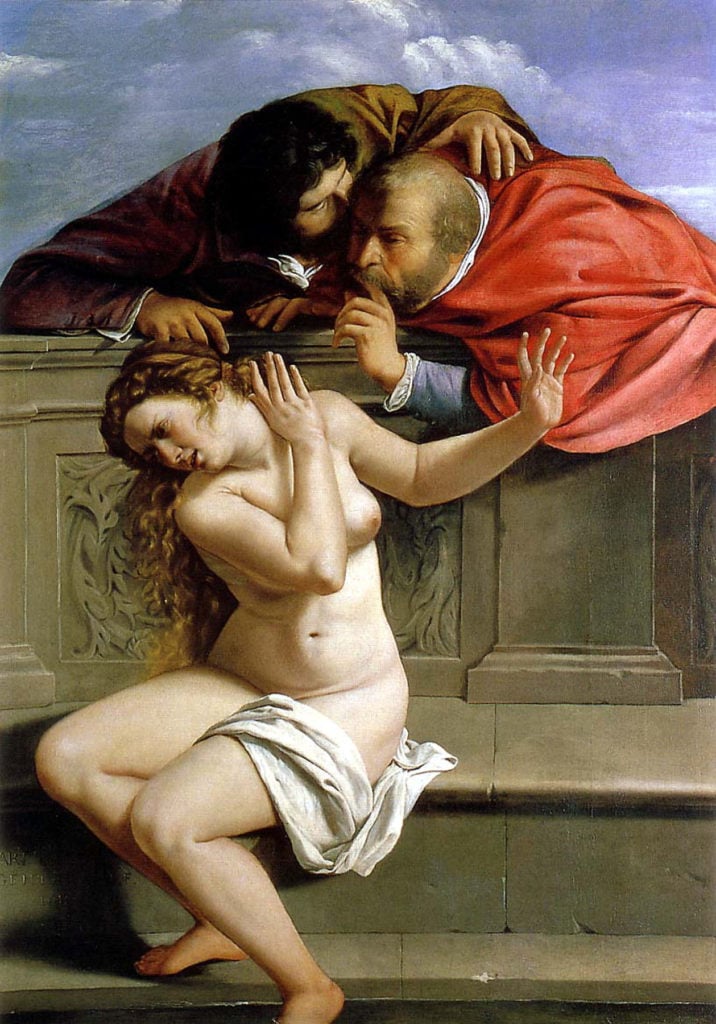
Artemisia Gentileschi, Susanna and the Elders (1610–11). Courtesy of the Schloss Weißenstein collection, Pommersfelden, Germany.
Gentileshchi, who was just 17 at the time, refused to let the ordeal define her. When her hands healed, she joined the Accademia di Arte del Disegno Florence—becoming the first woman to attend—and painted for patrons in Venice, Naples, and London, where she was sought out by King Charles I. Essentially illiterate, Gentileschi told her story through her art, painting several works that depicted brutal violence, such as Judith Slaying Holofernes (1614–20).
After her death, Gentileschi fell into obscurity, but her accomplishments have been recognized in recent decades. As an artist, she is considered something of a female Caravaggio, who was a close friend of her father.
Gentileschi set a new auction record this past December, with the $2.2 million sale of Sainte Catherine d’Alexandrie at Christophe Joron-Derem to London’s Robilant + Voena gallery, according to the artnet Price Database. This newly discovered self-portrait, showing the artist in the role of the martyr St. Catherine, bested her previous record, Mary Magdalene In Ecstasy, which sold for $1.2 million at Sotheby’s Paris in 2014.
artnet news spoke with McCullough about Gentileschi’s relevance in 2018 and how her work has transcended her personal tragedy.
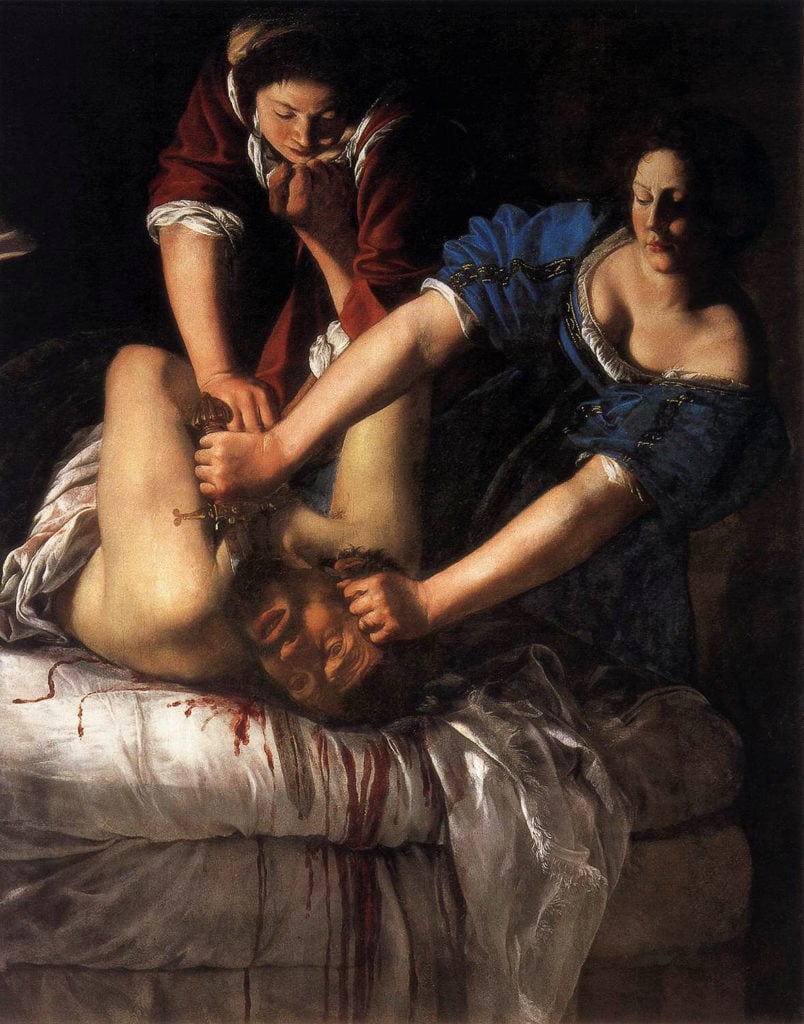
Artemisia Gentileschi, Judith Slaying Holofernes (c. 1614–1620). Courtesy of the National Museum of Capodimonte, Naples.
When did you first learn about Artemisia, and what was your reaction to learning her story?
There was a passing reference to Artemisia in a Margaret Atwood book I was reading. I was curious, so I went looking, and ended up in the art history section of the library. I was outraged that I’d never heard of her before. Both her art and her story felt like things I should have learned in school. That was in 2001.
The idea for this book long predates #MeToo. What inspired you to begin researching the play that evolved into Blood Water Paint? What was the conversation about sexual assault like at that time?
As soon as I discovered Artemisia’s story, I knew I was writing a play about it. It had a very long development process before it was finally produced in 2015 in Seattle.
Back in 2001, there wasn’t any sort of conversation [around sexual violence] like there is now. There were conversations in my women’s study classes, or in Ms. magazine, or privately among my friends. Today, the internet, as horrible as it can be for women, has facilitated these conversations, and has been empowering in terms of sharing stories.
What was it like reading the court transcripts of Artemisia’s case?
I read the English translation of the complete transcript of the trial in Mary D. Garrard’s Artemisia Gentileschi: The Image of the Female Hero in Italian Baroque Art (Princeton University Press, 1989). It was immediately engaging and also horrifying to see how identical this rape trial from 400 years ago was to a rape trial then in 2001—and now, because it never changes.
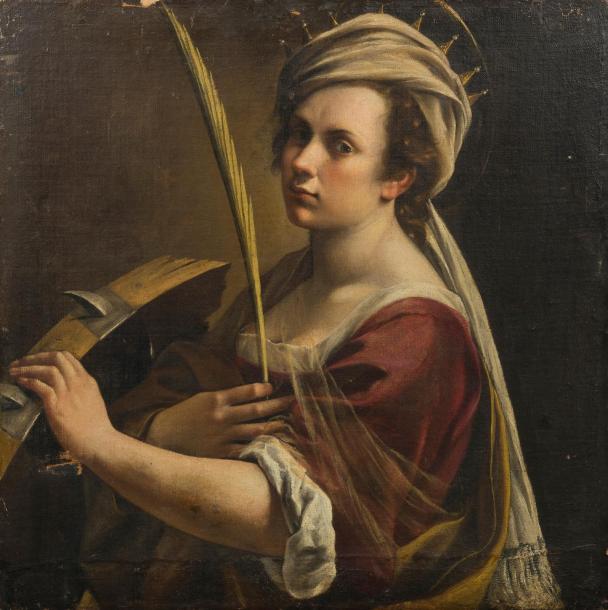
Artemisia Gentileschi, Sainte Catherine d’Alexandrie. Courtesy of Robilant + Voena.
Based on how the trial is portrayed in your book, I saw some very uncomfortable parallels to how authority figures treat sexual assault claims in the present day.
The transcript is really interesting, because it is not only focused on the day of the attack. It gives the whole context for her relationship with this man. The testimony is filled with the same kind of slut-shaming and victim-blaming that we still see today. At one point, the rapist’s side presents letters that they claimed Artemisia had written to all these other lovers. But she was illiterate, she couldn’t write!
The idea was, “we’re going to say she was a whore, so obviously she wasn’t raped.” That’s a story that we tell now: “How many men have you slept with? Were you a virgin? What were you wearing?” It’s all just tearing the victim down, which was not happening to the rapist. He is just assumed to be an upstanding man.
And Tassi was anything but! He was married and had possibly hired bandits to kill his wife!
Yes, he had a very shady and sordid past.
That doesn’t come across in the novel.
That was intentional. So often, there’s this narrative that you can tell that rapists are bad guys—that guy’s creepy, that guy’s rapey. But they’re not. They can be captain of the football team, a completely upstanding, quality guy from the outside. I didn’t want Agostino to be obviously shady. I wanted it to reflect the more complicated reality that exists in so many cases.
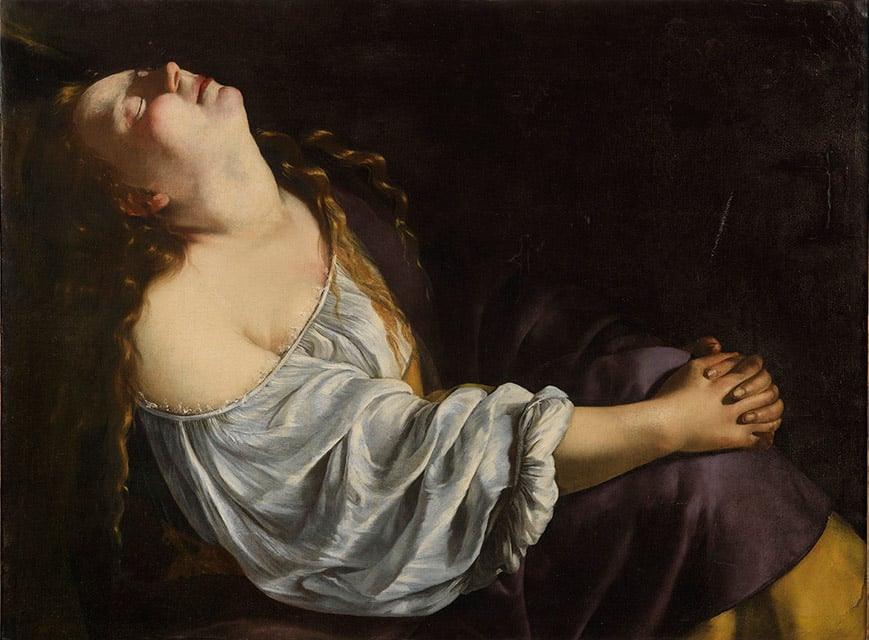
Artemisia Gentileschi, Mary Magdalene. Courtesy of Sotheby’s.
When I was reading it, I really thought it was a love story for the first half of the book.
That’s what I wanted—and that’s what she wanted. Artemisia was falling for Tassi. She thought they could have something, but when she wouldn’t give him what he wanted, it turned.
In the book, Artemisia wants nothing to do with Tassi after the rape. But in the trial, it’s clear that she continued to hope that they would marry. Why did you make that change?
That was something I didn’t want to include in the book. It’s so offensive to our modern sensibilities that someone would want to marry their rapist, but it was not uncommon back then. Once a woman had been raped, she was no good as a bride, so marrying the rapist was a way of making the best of a bad situation.
Why did the court resort to torturing Artemisia?
We can ask that same question of rape trials today! Why are the victims forced to prove over and over again that they’re telling the truth? A woman’s word is worth less than that of a man. Even today it still takes the word of dozens of women before a figure like Harvey Weinstein or Bill Cosby will fall from grace. The torture was to prove her word was good. As a man, Agostino Tassi didn’t have to prove his word was good.
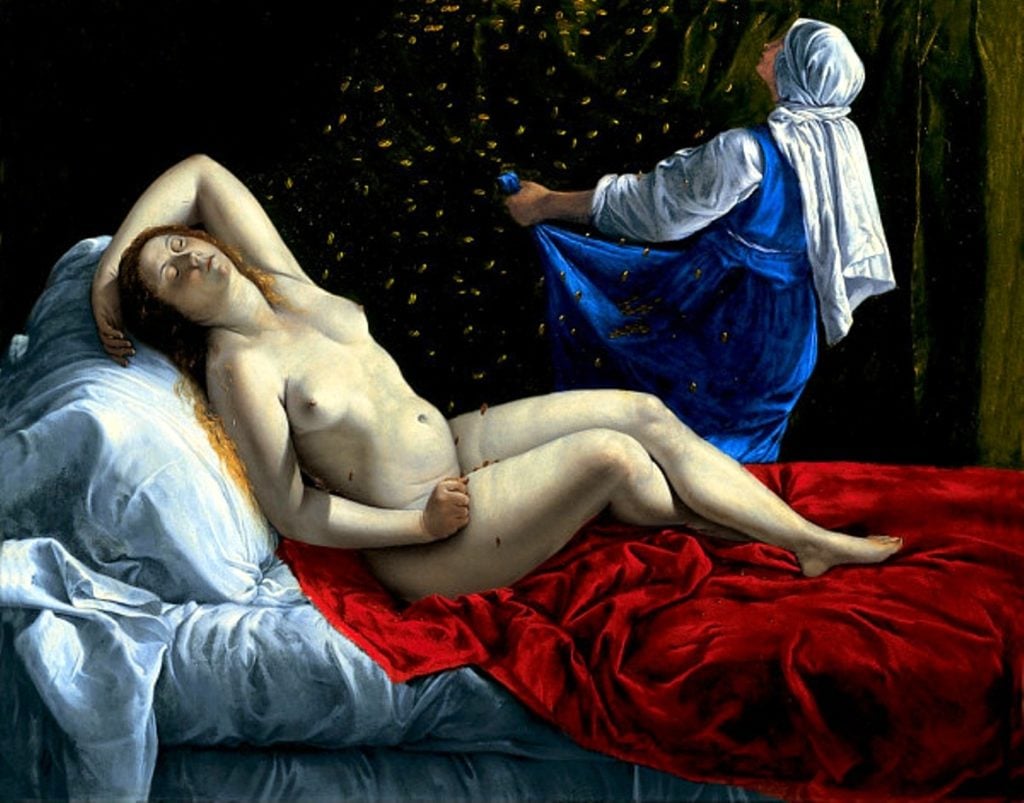
Artemisia Gentileschi, Danaë (1612). Courtesy of the St. Louis Art Museum.
How much of Artemisia’s personality were you able to discern from the records, and how much is your own interpretation?
It’s definitely a work of fiction, and I created a character. From this period in her life, all we have to speak for her is her art—which I think says a lot—and this trial transcript. Anyone who’s been through a trauma wouldn’t want you to judge them entirely based on that piece of their life, but there are seeds in the transcript that I built from.
When they’re preparing to torture her and they’re weaving these cords around her knuckles to crush her joints, Artemisia looks at her rapist and she says “this is the ring you give me, and these are your promises.” He said he’d marry her, and then he backed out. And as they’re torturing her, she says “It’s true, it’s true!” The transcript notes that she repeats it over and over—they couldn’t even write it in as many times as she said it. I see this fire in her, this unwilingness to be moved in her truth. That’s what I found in the historical record, and I built the rest of her personality around that.

Joy McCullough, author of Blood Water Paint. Photo courtesy of John Ulman.
Why did you write the book in verse?
Verse strips everything else away except the emotional core of the story. In a story like this, it’s less traumatic, both to read it and to write it, when those details aren’t fully described. When a historical novel that goes into all the detail of day-to-day life, about what they wore and how they cooked, it can keep the reader at arm’s length. Writing in verse makes the story feel more relevant, and that was important to me, because the story is so now.
In your telling, Artemisia and her father, Orazio Gentileschi, have a fraught but ultimately, I think, loving relationship. How did you decide on their dynamic?
It’s such a brutal story that it needs to have bits of hopes in it. Giving Artemisia this not completely awful relationship with her father is one of the ways that I did that. Orazio made some horrible choices. In that day, you did not leave a young unmarried woman alone with a man who was not family. He had to have had some knowledge of what could happen when he hired Tassi. Orazio also used his daughter as a nude model, because it was illegal to hire nude models in Rome. It makes me cringe horribly for her.
But the most significant thing to me in their relationship is that Orazio takes Artemisia on as an apprentice. He doesn’t only keep her doing grunt work grinding pigments and cleaning brushes—he teaches her to a level of mastery, which he did not have to do, and was extremely unusual for the day.
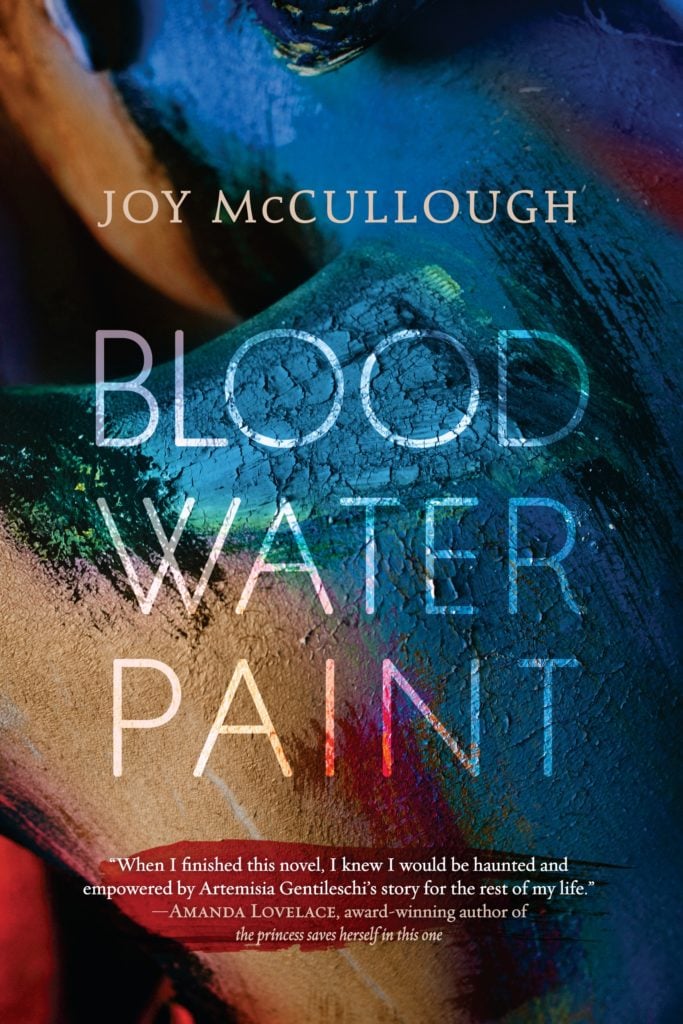
Joy McCullough, Blood Water Paint, a new book about Artemisia Gentileshi. Image courtesy of Dutton Books.
In the book, you suggest that Orazio was actually quite a mediocre painter, and that much of his output can be attributed to Artemisia. Is that what art historians believe? Or is that a bit of artistic license?
Orazio had important commissions and his work is in major museums. In the book, she’s a teenager who’s resenting her father, so we’re seeing him through that lens. It’s not fair to say he’s mediocre, but there is scholarship that suggests that she contributed heavily to his work. There are paintings attributed to Orazio that Artemisia may have been responsible for. It wasn’t unusual at the time for an apprentice to do uncredited work on paintings that masters would sign their names to, but I think the lines were blurrier with the two of them.
What is the significance of the intertwining stories of the biblical figures Judith and Susanna who appear in the book?
Artemisia’s mother died when she was 12. In the book I’ve given her Judith and Susanna. They were figments of her imagination, they weren’t actually there—but she was painting them. She was throwing herself into her work and that was how she got through it, and that was how she gave herself women to rely on and look up to and believe in.
When I first discovered Artemisia’s story, I also learned about Judith and Susanna’s for the first time. During the Reformation, Protestant scholars decided that certain stories were not divinely inspired, so they were removed from the Bible. It’s no big shocker to me that these stories of powerful women were declared apocryphal. Stories are powerful, and Artemisia draws strength from Judith and Susanna’s stories.
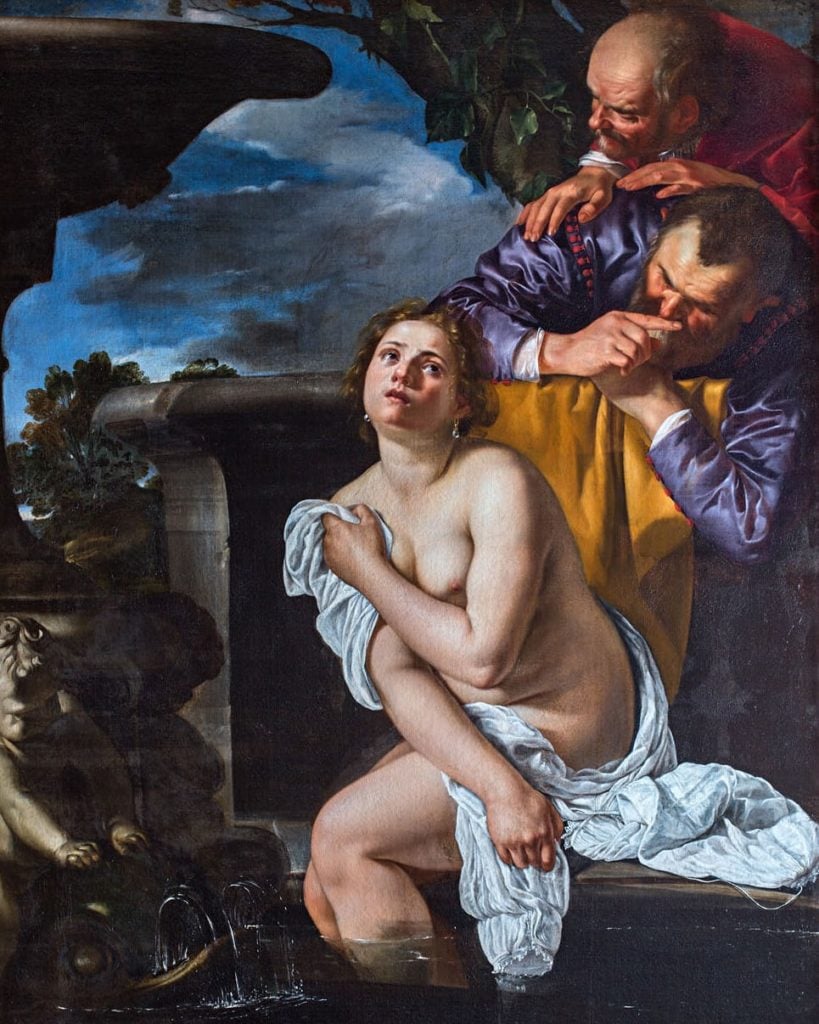
Artemisia Gentileschi, Susanna and the Elders (1622). Courtesy of the collection of the Marquess of Exeter, Burghley House, Stamford, Lincolnshire, England.
Do you think Artemisia’s artistic achievements have been overshadowed by her rape? What became of her after the trial?
Artemisia did recover from her torture, and about a month after the trial she was married off to a friend of a friend and moved to Florence. She went on to flourish and have a wonderful career. I could write a whole series of books about it. This episode from her life was what spoke to me because I was so gripped by the court transcripts and how little things have changed. I was inspired by the magnitude of the horror Artemisia survived before going on to have this amazing career.
Why do you think Artemisia was able to succeed as an artist in an era where there were so few options for women?
She didn’t have much privilege, but her father was a painter and a colleague of Caravaggio’s. Orazio was willing to take her on as an apprentice and to teach her. But that wouldn’t have been enough on its own. Artemisia had this sheer force of will, this drive that female artists have had to have throughout history in order to leave their mark.